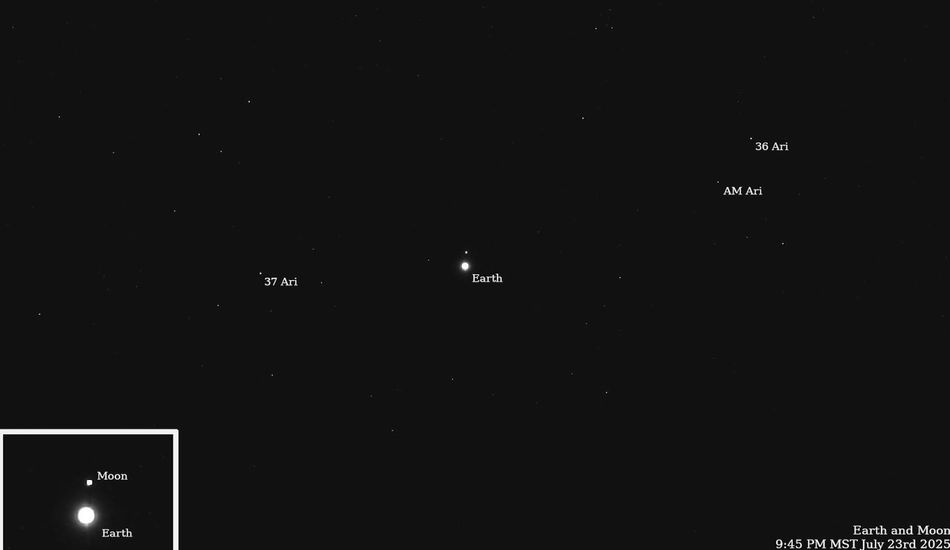
Psyche Spacecraft Captures Rare View of Earth and Moon From 180 Million Miles
It's pretty wild to think about our little planet from way, way out in space. The Psyche spacecraft, which is on a super long trip to check out a metal asteroid, turned its cameras back towards home and snapped a pic. What it captured is a humbling reminder of just how tiny Earth and the Moon look from 180 million miles away.
Launched last year, the Psyche mission has an ambitious goal: to study an asteroid in the asteroid belt that scientists think is the exposed core of an early planet. While it's cruising along, the team's using the spacecraft's cameras to test how well they can spot objects reflecting sunlight. And what better test subjects than Earth and its Moon?
In July, the team took several long-exposure shots of Earth and the Moon. The image shows our planet as a bright point of light with the Moon nearby, all against a backdrop of stars in the Aries constellation. I think it's amazing how clearly they were able to capture it from so far away. It really makes you ponder our place in the vastness of space.
This image naturally brings to mind the famous "Pale Blue Dot" photo taken by Voyager 1 back in 1990. That picture was taken from a staggering 3.7 billion miles away, showing Earth as just a tiny speck. While Psyche's image isn't from quite as far, it still gives you that same sense of perspective. It highlights our planet's size and significance in the grand scheme of things.
The spacecraft is equipped with special cameras designed to capture light that we can't even see with our own eyes. These cameras will help scientists figure out what the metal asteroid is made of when Psyche finally arrives. It still has a long journey ahead, needing to travel around 2.2 billion miles to reach the asteroid belt and enter the asteroid's orbit by late July 2029.
The asteroid itself is huge, about 173 miles wide, and it orbits the Sun between Mars and Jupiter. Scientists are super excited about it because they believe it might be the exposed core of a planetesimal, a building block of a planet that lost its outer layers way back when the solar system was forming. If this turns out to be true, it will give us precious insights of how planets are formed.
Source: Gizmodo